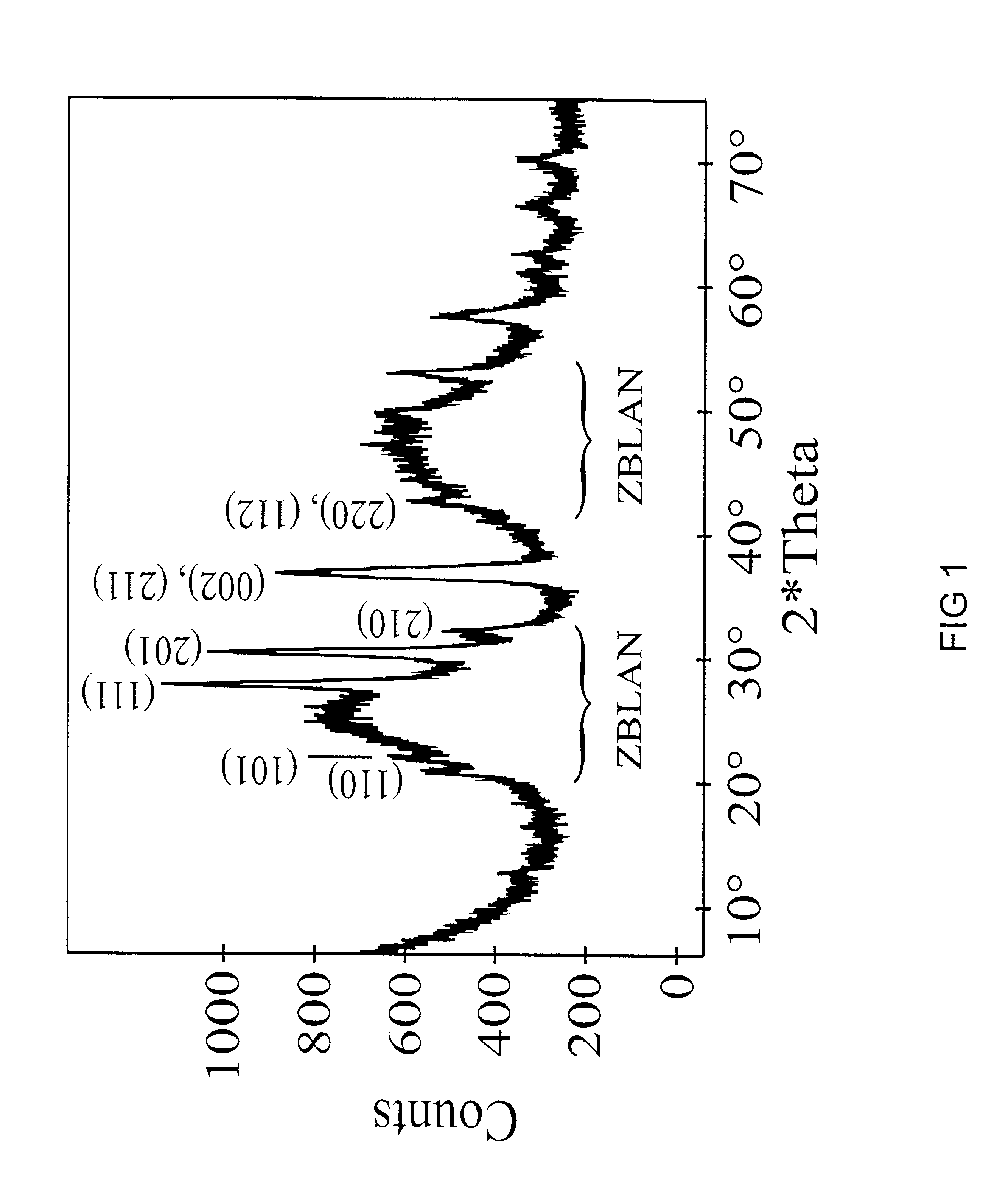Fluoro glass ceramic showing photostimulable properties
a fluoro glass ceramic and photosynthesis technology, applied in the direction of chemistry apparatus and processes, light-emitting compositions, etc., can solve the problems of difficult vacuum deposition of phosphor crystal needles, and inability to produce high-quality screens. , to achieve the effect of low scattering and good environmental stability
- Summary
- Abstract
- Description
- Claims
- Application Information
AI Technical Summary
Benefits of technology
Problems solved by technology
Method used
Image
Examples
example 1 (
E1)
A glass ceramic material was produced by replacing 5 mole % of fluoride ions by bromide ions in a fluorozirconate glass, as prepared in comparative example 3. Instead of 20 mole % of NaF, only 15 mole % of NaF was present, and 5 mole % of NaBr was added.
In FIG. 1 the X-ray diffraction (XRD) spectrum for Cu K.alpha. radiation of bromine-doped fluorozirconate glass of example 1, recorded at Real Time is shown. Relatively sharp diffraction lines from an included crystalline phase superimposed on the broad glass background (broad maxima at 26 and 47 degrees typical for glasses close to the ZBLAN formulation) can clearly be seen. The lines in the pattern seem to indicate that a so-called high pressure form of BaBr.sub.2 is formed in the glass.
example 2 (
E2)
Example 1 was repeated except for the dopant, in this example the glass was doped with 1 mole % CeF.sub.3.
The 6 glasses, two homogeneous fluoroaluminate glasses of the prior art, CE1 and CE2, two homogeneous fluorozirconate glasses, CE3 and CE4, and two invention glasses (E1 and E2) were irradiated with X-rays and then stimulated by light with a wavelength of 632 nm (CE1 and CE2) and of 570 nm (CE3, CE4, E1 and E2). The intensity of the light emitted upon stimulation was measured on a relative scale. The results are reported in table 1.
In this table intensity is the relative intensity of the light emitted upon stimulation. The photomultiplier used to measure this intensity had a threshold value. Intensities 10 times lower than the intensity of light emitted by the glass-ceramic of example 2 could not be registered.
PUM
| Property | Measurement | Unit |
|---|---|---|
| temperature | aaaaa | aaaaa |
| temperature | aaaaa | aaaaa |
| temperature | aaaaa | aaaaa |
Abstract
Description
Claims
Application Information
 Login to View More
Login to View More - R&D
- Intellectual Property
- Life Sciences
- Materials
- Tech Scout
- Unparalleled Data Quality
- Higher Quality Content
- 60% Fewer Hallucinations
Browse by: Latest US Patents, China's latest patents, Technical Efficacy Thesaurus, Application Domain, Technology Topic, Popular Technical Reports.
© 2025 PatSnap. All rights reserved.Legal|Privacy policy|Modern Slavery Act Transparency Statement|Sitemap|About US| Contact US: help@patsnap.com

